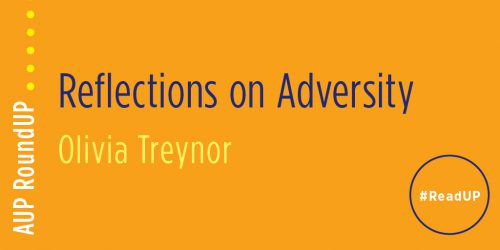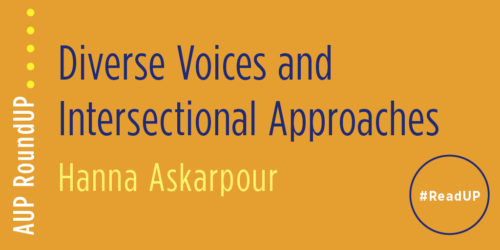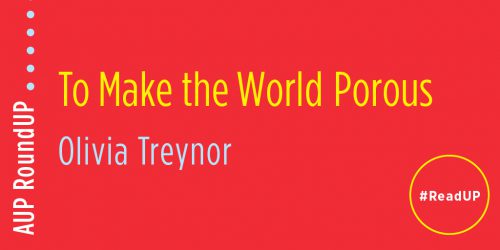
With one month-long celebration of women in translation literature behind us and another month of commemorating world literature in progress, I’ve been thinking about language: how language shapes our perception of our reality, how language shifts, how we communicate as an increasingly globalized society. As Ellen Jones writes of Minae Mizumura’s An I-Novel for the CUP blog, “Through the character of Minae, Mizumura thinks extensively about whether and how language can change our perspective.” This question is my lens for today’s post. From poetry to French loan words in the English language to the ambition of “smart cities,” this week’s RoundUP explores how language and storytelling are inextricably linked.
IN POETRY
Ahead of the release of his collection Help Me, Information, David Kirby writes about his unique relationship to language as a poet. In his post, Kirby humorously describes writing a poem after reading Lewis and Clark’s journals and being inspired by the gratuitous spelling errors in the historic texts: “I’m as topical as anyone else. But I began with poor spelling rather than politics. I let the poem figure out what it wanted to say. I was just the secretary.” For Kirby as an artist, words emerge from an intent other than direct communication. Kirby says he “never start[s] with anything in mind except to have fun with words and see where they lead me.” While language is usually understood to be a means of communicating an idea that exists before its articulation, for Kirby, the meaning comes after the language. This guest post is a fascinating piece that prompted me to reconsider and reorient the relationship between significance and words.
IN PERSONAL HISTORY
In his post, Michael Braddick makes a case for the concept of personal history as fiction of articulation. Braddick describes how one’s current context influences one’s individual narrative. “The aspects of the past that seem important vary according to the circumstances in which we reflect on it,” he writes. “When we say who we are, we make choices about which memories to talk about; when we make those selections we are, in a sense, defining who we are.” Here, Braddick proposes that we construct ourselves in an active manner through language. When we describe ourselves, we are offering not an objective chronology of personal events but rather an articulation of those events that form a narrative. Language, then, is what makes way for the self.
IN FRENCH IN ENGLISH
Richard Scholar wrote an engrossing and illuminating essay on how language has its own internal history. Scholar describes the legacy of Francophone phrasings integrated into the English language, noting that some English speakers wanted to expel any borrowed French words from the Anglophone tradition because they were seen as traces of France’s past political occupation. He writes that “in the 1640s, the English political radical John Hare was already urging ‘that our Language be cleared of the Norman and French invasion upon it’ . . . French borrowings in English sentences could not entirely escape the suspicion that they were the mark of a humiliating foreign takeover.” Indeed, language is often an enduring hallmark of history. As Scholar writes, “Words matter to me, not as self-sufficient objects, but for the stories they tell of what it is to live a human life in history and for the role they play in the making of concepts, practices, and forms in and across cultures.” Scholar’s piece surprised me in its reminder that the very medium human beings use to tell stories—language—is the site of so much history.
INTERNET
Of course, there cannot be talk of contemporary communication without mention of the internet. Allison B. Powell, author of Undoing Optimization, writes of “smart cities” in her blog post, describing that “enthusiasm for projects like the Blacksburg Electronic Village—which aimed in the late 1990s to give the entire population of the town of Blacksburg, Virginia, access to the internet—turned on the idea that networked information systems could enhance participation in local decision-making and strengthen the ties between people through the benefit of enhanced connectivity to an information network.” There was, Powell posits, the conviction that access to the internet could reshape local conversations for the better. This prediction that more efficient communication meant better communication seems perhaps naive in our age of polarized dialogue that takes place largely on the internet, but this utopian “early 2000s visions of internet-based democratization of civic action” reimagined what cities and their internal discourse could look like. Here, the history embedded is not in the words but in the platform that transmits those words: the internet. It is not only what we communicate but also how we communicate that Powell asks us to consider in her recalling of smart cities.
IN SUM
Taking all of these approaches to thinking about communication together, I begin to color in the full complexity of how language emerges. Reevaluating how language has evolved, served, and proliferated over time is a compelling exercise, especially between two months of celebrating work that emerges from a myriad of languages, each with its own unique, complicated, and worthwhile histories. Until next time.








